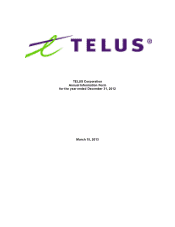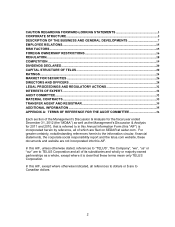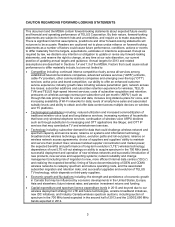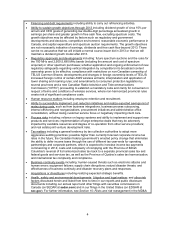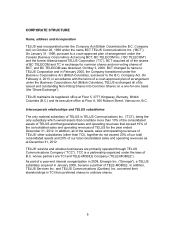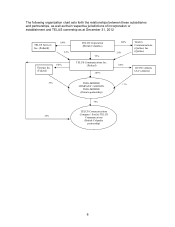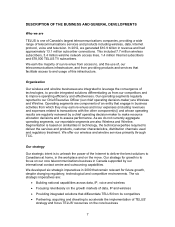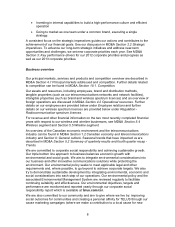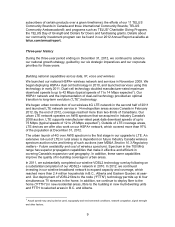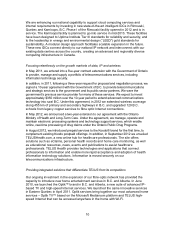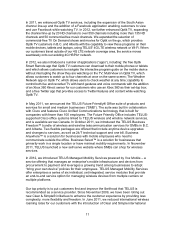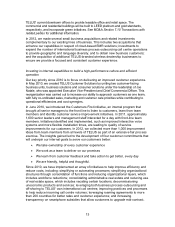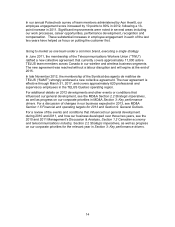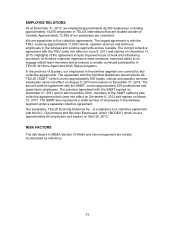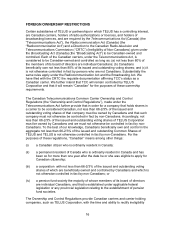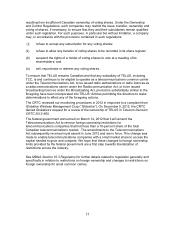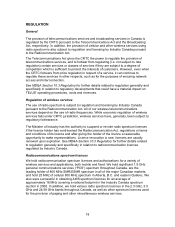Telus 2012 Annual Report Download - page 9
Download and view the complete annual report
Please find page 9 of the 2012 Telus annual report below. You can navigate through the pages in the report by either clicking on the pages listed below, or by using the keyword search tool below to find specific information within the annual report.
9
subscribers of certain products over a given timeframe); the efforts of our 11 TELUS
Community Boards in Canada and three international Community Boards; TELUS
Community Ambassadors®; and programs such as TELUS’ Charitable Giving Program,
the TELUS Day of Giving® and Dollars for Doers and fundraising grants. Details about
our community investment program can be found in our 2012 Annual Report available at
telus.com/annualreport.
Three-year history
During the three-year period ending on December 31, 2012, we continued to advance
our national growth strategy, guided by our six strategic imperatives and our corporate
priorities for those years.
Building national capabilities across data, IP, voice and wireless
We launched our national HSPA+ wireless network and services in November 2009. We
began deploying HSPA+ dual cell technology in 2010, and launched services using this
technology in early 2011. Dual-cell technology doubled manufacturer-rated maximum
download speeds to up to 42 Mbps (typical speeds of 7 to 14 Mbps expected1). Our
HSPA+ network and the implementation of dual-cell technology provided an optimal
transition to long-term evolution (“LTE”) technology.
We began urban construction of our wireless 4G LTE network in the second half of 2011
and launched LTE network service in 14 metropolitan areas across Canada in February
2012. By the end of 2012, coverage reached more than two-thirds of Canadians. Our
urban LTE network operates on AWS spectrum that we acquired in Industry Canada’s
2008 auction. LTE supports manufacturer-rated peak data download speeds of up to
75 Mbps (typical speeds of 12 to 25 Mbps expected1). Outside of LTE coverage areas,
LTE devices we offer also work on our HSPA+ network, which covered more than 97%
of the population at December 31, 2012.
The urban launch of 4G over AWS spectrum is the first stage in our upgrade to LTE. An
extensive roll-out of LTE in rural areas is dependent on future Industry Canada wireless
spectrum auction rules and timing of such auctions (see MD&A Section 10.3 Regulatory
matters - Future availability and cost of wireless spectrum). Spectrum in the 700 MHz
range has superior propagation capabilities that make it effective and efficient in
covering Canada's expansive rural geography. In addition, these same capabilities
improve the quality of in-building coverage in urban areas.
In 2011, we substantially completed our wireline VDSL2 technology overlay following on
a substantial completion of our ADSL2+ network in 2010. In 2012, we continued
investing in our wireline broadband network to expand capacity and coverage, which
reached more than 2.4 million households in B.C., Alberta and Eastern Quebec at year-
end. Our deployment of VDSL2 fibre to the node (“FTTN”) technology permits up to four
simultaneous TV streams in the home. In addition, we continue to deploy fibre to the
home (“FTTH”) in new residential areas, fibre to the building in new multi-dwelling units
and FTTH to selected areas in B.C. and Alberta.
1 Actual speed may vary by device used, topography and environmental conditions, network congestion, signal strength
and other factors.

